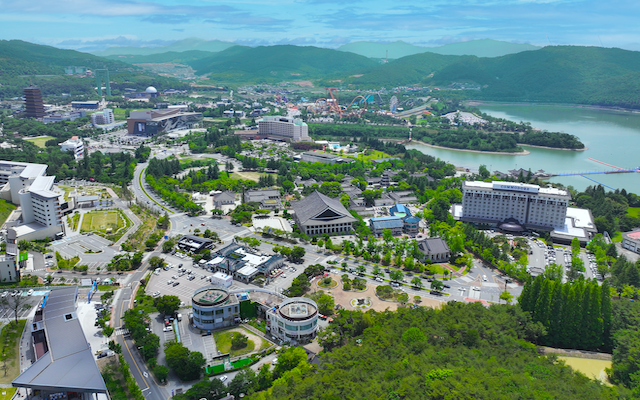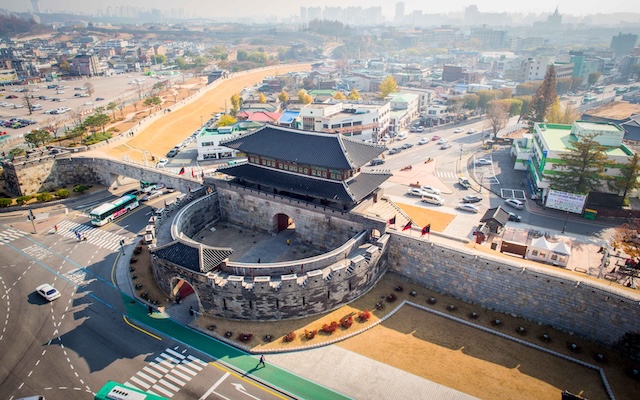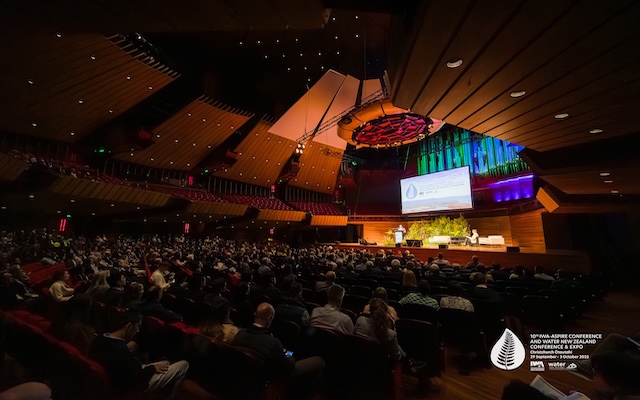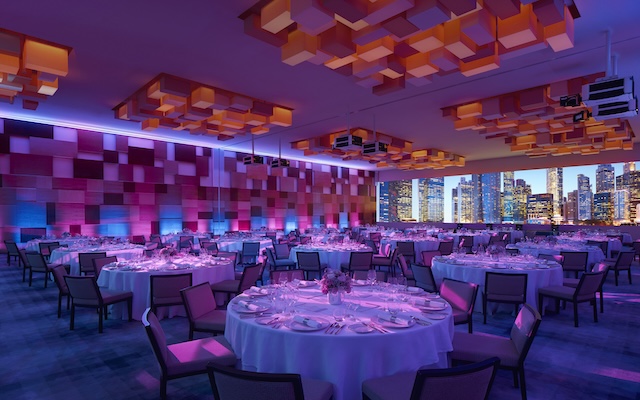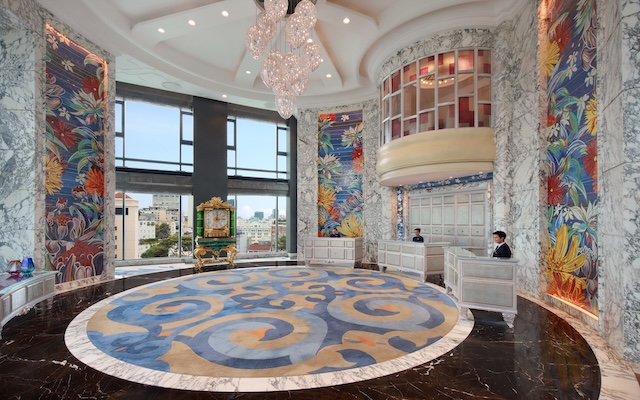- Large industry organisations are leading the charge towards sustainable exhibitions
- Some reusable booth furniture and materials are still too pricey for widespread adoption
- Production and post-show processes must be considered when measuring sustainability goals
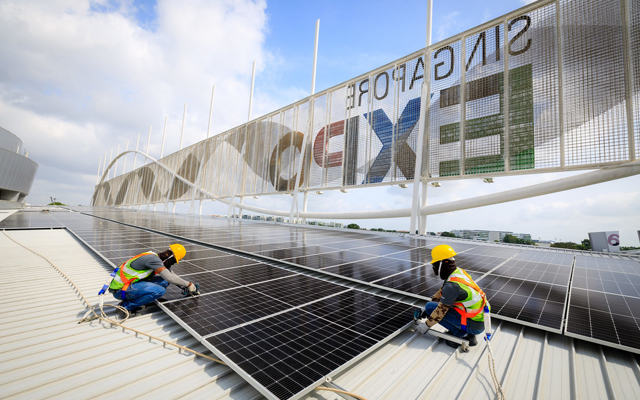
Business event organisers, participants and industry organisations are increasingly paying attention to their role in meeting sustainability goals through their activities.
In advocating for greater sustainability commitment, the ninth edition of the Global Exhibitions Day (GED) on June 5, 2024, bore the theme, Exhibitions are catalysts to sustainable futures. It underscored four key messages: exhibition’s ability to drive progress; exhibition’s ability to facilitate economic growth; exhibitions are sustainable; and exhibitions connect people. Aligned with this theme, GED 2024 saw UFI – The Global Association of the Exhibitions Industry planting 3,000 trees across the Philippines, Madagascar, and Ecuador through a collaboration with sustainability partner EcoMatcher and digital marketing partner snöbal.
A month later, the massive Net Zero Carbon Events (NZCE) initiative, hosted by the Joint Meetings Industry Council, gained a new signatory. ASM Global, a global company specialising in venue development and management and live entertainment content management, signed the NZCE Pledge on July 29.
In taking the NZCE Pledge, the signatory organisation aims to achieve net zero greenhouse gas (GHG) emissions by 2050. This is in line with global efforts set out by the Paris Agreement to limit warming to 1.5°C and reduce total global GHG emissions by 50 per cent by 2030, and to actively promote and advocate for industry efforts throughout the value chain.
ASM Global’s pledge is significant to the NZCE initiative, as the single organisation has a network of over 400 venues worldwide, which gives it the power to galvanise widespread adoption of sustainable practices within the industry.
Venue support
Singapore-based Constellar Holdings, which manages the Singapore Expo venue, is also a signatory of the NZCE Pledge. It is the first business events venue in Asia to install solar panels. Set across Singapore Expo roofs, these 16,508 panels can generate 12GWh annually – enough to power 4,000 three-room apartments for a year, and allow the venue to effectively reduce carbon emissions equivalent to 500 round trips between Singapore and New York, shared group CEO Chua Wee Phong.
Constellar Holdings has also installed a food digester and built three on-site herb gardens that grow over 25 varieties of herbs and spices, which are used by the in-house culinary team to prepare meals for events.
Chua told TTGmice that the team is relentless in testing “new innovative prototypes to achieve our sustainability goals”, and is driven by the desire to do their part “to ensure that our future generations have a good planet Earth to live on”.
He emphasised that the journey to sustainable events must be taken by everyone in the industry. “In Singapore, our direction is set by the Singapore Tourism Board. We are all involved, from venue managers like us to stand builders like Pico, and to exhibitors and attendees,” stated Chua.
While Constellar Holdings cannot dictate how clients build their booths, Chua said the sustainability initiatives set out by Constellar Holdings were a way to help event owners and organisers achieve their green objectives.
“Sustainability comes at a cost, and it isn’t cheap to use special paper furniture and modular booths made of recyclable materials. However, by choosing to take their events to an accredited sustainable venue like ours, event owners and organisers are already halfway there. They know that their events at Singapore Expo are running on sustainable energy, they are minimising single-use plastic consumption, their food waste is being put to good use, etc,” explained Chua, adding that Constellar Holdings offers clients a post-event report that spells out their environmental impact to aid planning.
Many layers to sustainability
David Holmquist, sales executive with Queensland-based Pyramid Displays, acknowledged the growing trend in sustainable exhibition booths, but said event owners, organisers and exhibitors have many factors to consider when aiming for a low carbon impact event.
One consideration is how stand equipment is produced and handled after tear-down.
Holmquist told TTGmice: “Sustainability has to make sense. You could use booth furniture made of cardboard, which is made of recycled material and is foldable for storage and future use. However, it is extremely fragile with no longevity. You could print a reusable fabric banner, but you have to ensure that your future stands are the same to be able to use that fabric banner again. Also, there is a cost attached to storing and freighting these reusable items to your next event somewhere in the world.”
Recognising that the sustainability responsibility rests not only on the user, Pyramid Displays has developed ways to minimise post-event waste. Boards and fabrics removed from stands are reused as infills, to create other pieces of furniture, or as in-house packaging materials.
He added that sustainability goals are not all about waste reduction and management; community goals are crucial too.
“We are an Australian homegrown company and have been in business for 28 years. We build a lot of our counters and fashion a lot of booth equipment in-house with the hands of Australians. When event owners and organisers use Pyramid Displays for their events in Queensland, they are helping us to feed the local community. By producing everything locally, we also minimise the carbon footprint of event build-up,” he said.
Both Chua and Holmquist agree that environmentally efficient exhibition furnishing is generally still pricey today due to the lack of production scale. However, the ongoing sustainability movement will eventually build up enough demand and bring costs down to an economical level.
“I love seeing new things popping up for the sake of sustainable events. The events industry is still in an experimental phase now, and some ideas are bound to do well and stick around. Sustainable exhibition design is an ongoing conversation,” Holmquist opined.
Chua agrees that just as some event supplies are made redundant due to sustainability considerations, other new ideas will come along. Citing the use of carpets in exhibitions as an example, he said most shows have completely done away with its use, but for events that still require a central carpet for aesthetics, there are now reusable and washable options.





